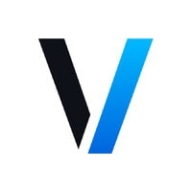

Veracode and OWASP Zap are well-known competitors in the application security testing category. Veracode seems to have the upper hand due to its extensive integration capabilities and robust support features, suitable for large enterprises.
Features: Veracode integrates seamlessly into the software development lifecycle with static, dynamic, and manual scanning features. It offers extensive language support and remediation consulting to aid in resolving identified issues. Being cloud-based, Veracode is user-friendly and highly supportive of developer tools. OWASP Zap, on the other hand, provides a cost-effective solution ideal for smaller teams with strong features for baseline penetration testing and security scanning.
Room for Improvement: Veracode needs to address issues like false positives, improve dynamic scanning capabilities, and expand its programming language support. Users also desire better reporting and faster scan times. OWASP Zap could enhance documentation, reporting formats, and support for advanced testing scenarios to extend its functionality.
Ease of Deployment and Customer Service: Veracode offers flexible deployment across public and private clouds, simplifying integration and reducing infrastructure management, with good, albeit sometimes slow, customer support. OWASP Zap is typically deployed on-premises, appealing to users seeking complete control without cloud-service costs, supported by a community-driven development model.
Pricing and ROI: Veracode's pricing reflects its comprehensive service offerings and robust support, making it less suitable for smaller companies due to budget constraints. Despite this, large enterprises often find a strong ROI in its security assurance. OWASP Zap provides a cost-effective, open-source solution that offers significant value, making it accessible to budget-constrained teams looking to establish basic security practices.
| Product | Market Share (%) |
|---|---|
| Veracode | 6.2% |
| OWASP Zap | 4.3% |
| Other | 89.5% |


| Company Size | Count |
|---|---|
| Small Business | 10 |
| Midsize Enterprise | 11 |
| Large Enterprise | 21 |
| Company Size | Count |
|---|---|
| Small Business | 69 |
| Midsize Enterprise | 43 |
| Large Enterprise | 112 |
OWASP Zap is a free and open-source web application security scanner.
The solution helps developers identify vulnerabilities in their web applications by actively scanning for common security issues.
With its user-friendly interface and powerful features, Zap is a popular choice among developers for ensuring the security of their web applications.
Veracode is a leading provider of application security solutions, offering tools to identify, mitigate, and prevent vulnerabilities across the software development lifecycle. Its cloud-based platform integrates security into DevOps workflows, helping organizations ensure that their code remains secure and compliant with industry standards.
Veracode supports multiple application security testing types, including static analysis (SAST), dynamic analysis (DAST), software composition analysis (SCA), and manual penetration testing. These tools are designed to help developers detect vulnerabilities early in development while maintaining speed in deployment. Veracode also emphasizes scalability, offering features for enterprises that manage a large number of applications across different teams. Its robust reporting and analytics capabilities allow organizations to continuously monitor their security posture and track progress toward remediation.
What are the key features of Veracode?
What benefits should users consider in Veracode reviews?
Veracode is widely adopted in industries like finance, healthcare, and government, where compliance and security are critical. It helps these organizations maintain strict security standards while enabling rapid development through its integration with Agile and DevOps methodologies.
Veracode helps businesses secure their applications efficiently, ensuring they can deliver safe and compliant software at scale.
We monitor all Static Application Security Testing (SAST) reviews to prevent fraudulent reviews and keep review quality high. We do not post reviews by company employees or direct competitors. We validate each review for authenticity via cross-reference with LinkedIn, and personal follow-up with the reviewer when necessary.